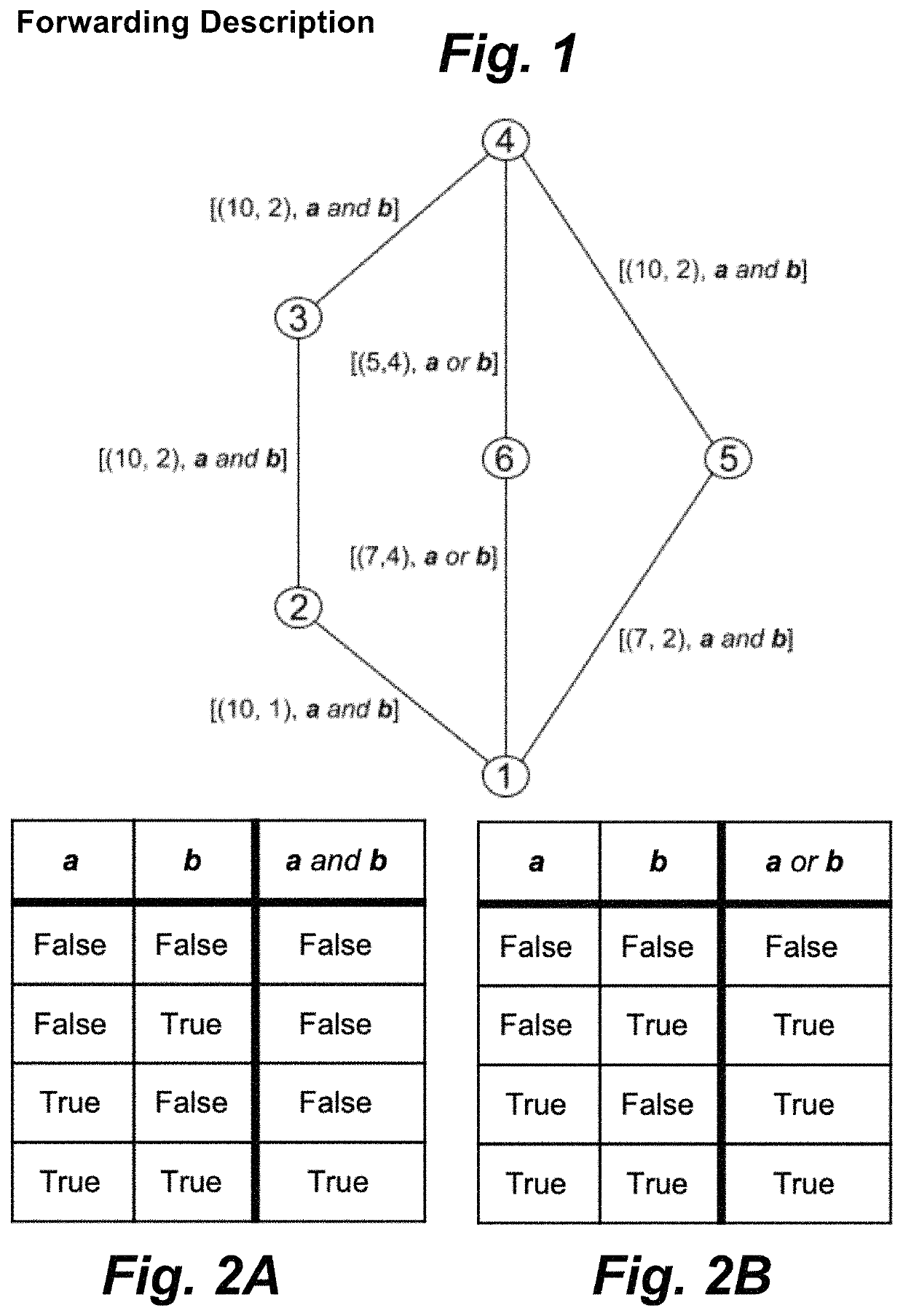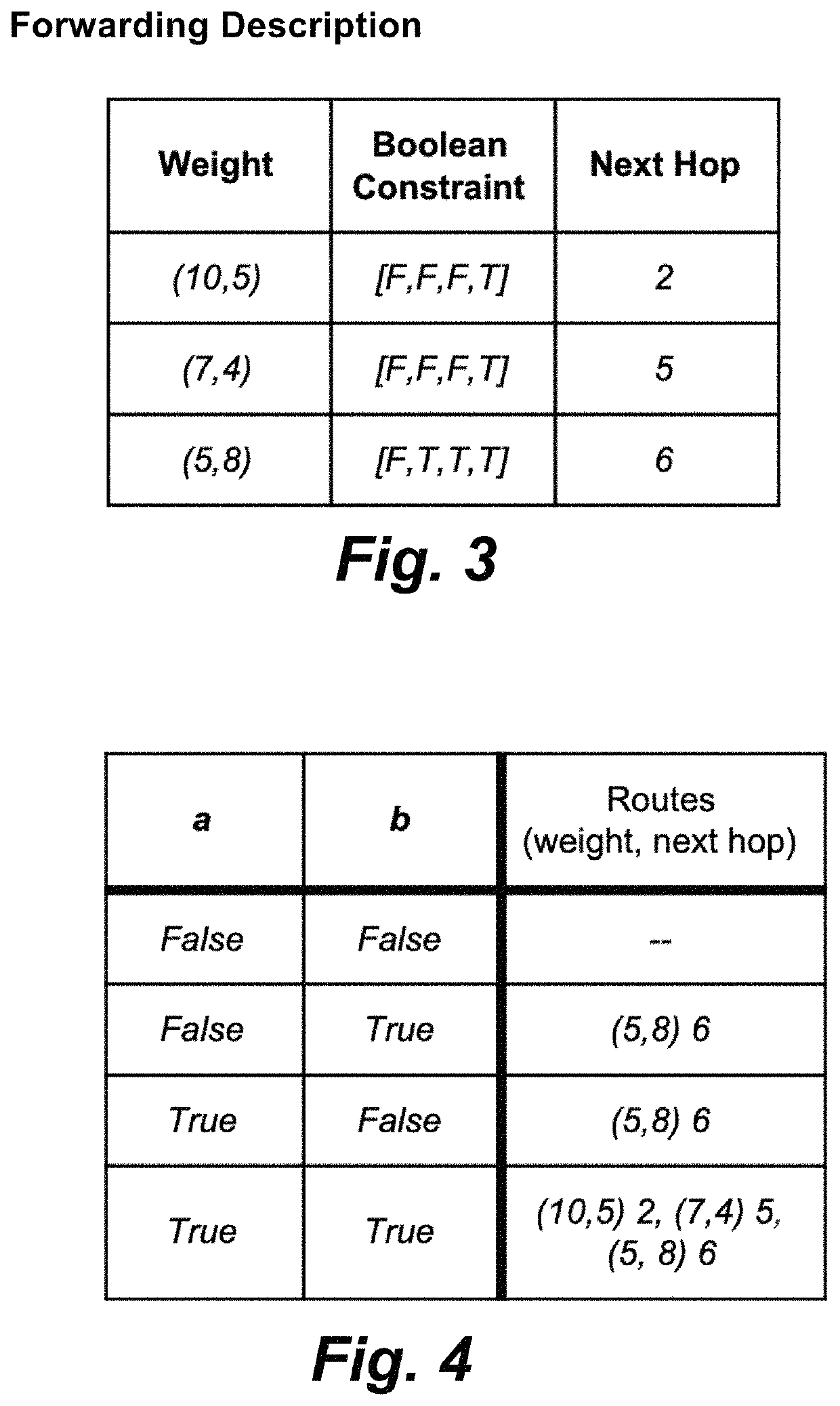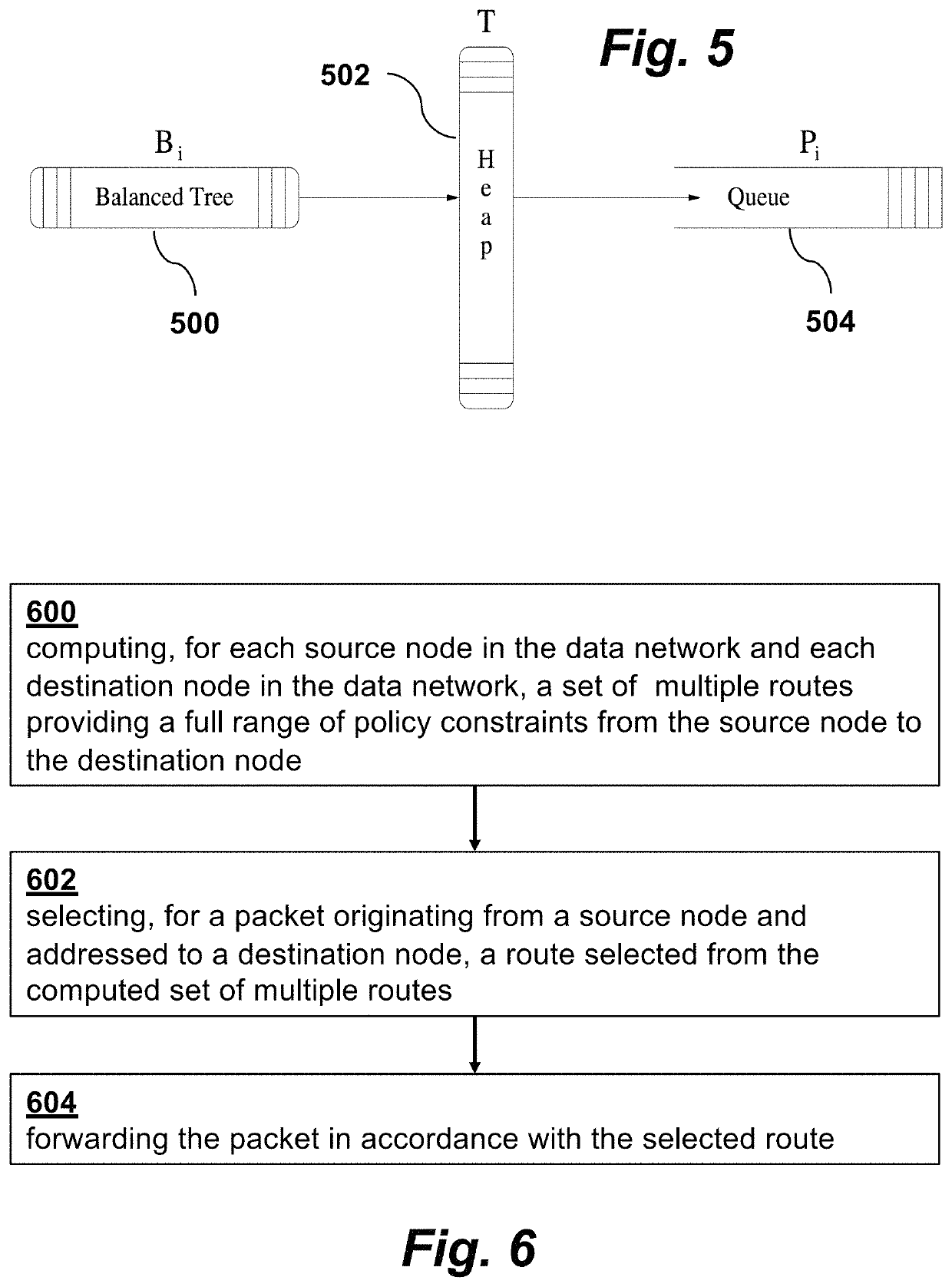Network congestion reduction using boolean constrained multipath routing
a multi-path routing and network congestion technology, applied in the field of data communication network routing solutions, to achieve the effect of reducing overhead costs and important efficiency
- Summary
- Abstract
- Description
- Claims
- Application Information
AI Technical Summary
Benefits of technology
Problems solved by technology
Method used
Image
Examples
Embodiment Construction
[0049]Internet routing is based on use of the best path to a given destination. This best-path model limits communication applications to the use of a single-path in an Internet environment. Furthermore, the predominant use of destination-based forwarding in the Internet is a particularly aggressive form of single-path communication. With destination-based forwarding, the path used to carry traffic through an intermediate node to a destination must be an extension of the path from the intermediate node to the destination. This strong tendency for traffic to be concentrated on a subset of available paths results in inefficient use of network resources with traffic experiencing congestion while network resources are still idle. Modern use of the Internet involves a wide range of applications with diverse requirements in terms of policy constraints. The diverse requirements of these applications are not well served by the existing Internet routing architecture. What is needed is an arc...
PUM
 Login to View More
Login to View More Abstract
Description
Claims
Application Information
 Login to View More
Login to View More - R&D
- Intellectual Property
- Life Sciences
- Materials
- Tech Scout
- Unparalleled Data Quality
- Higher Quality Content
- 60% Fewer Hallucinations
Browse by: Latest US Patents, China's latest patents, Technical Efficacy Thesaurus, Application Domain, Technology Topic, Popular Technical Reports.
© 2025 PatSnap. All rights reserved.Legal|Privacy policy|Modern Slavery Act Transparency Statement|Sitemap|About US| Contact US: help@patsnap.com



